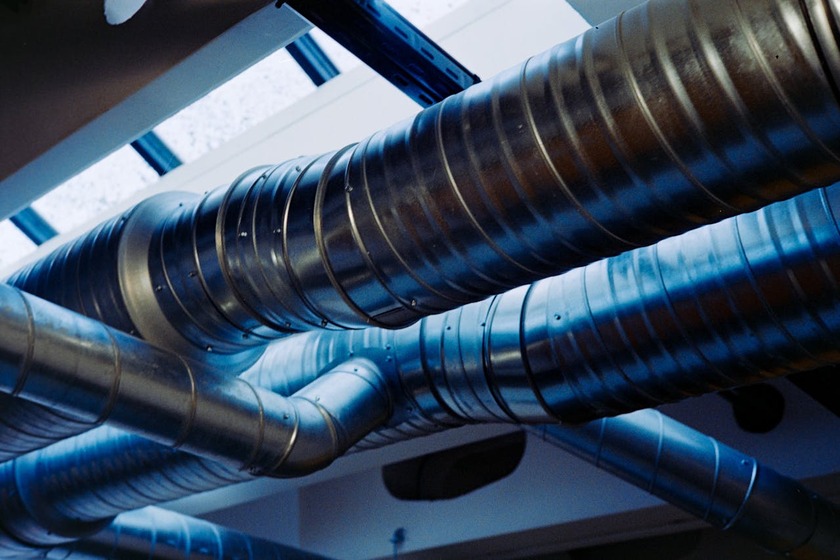Heating and cooling systems are the backbone of every home. With freezing winters, humid summers, and unpredictable weather in between, residents depend on their HVAC systems almost year round. Yet, many homeowners are unaware that the hidden network of ducts running through their homes can directly affect how well the system performs. Dust, dirt, and allergens that build up inside ducts don’t just harm indoor air quality, they also reduce efficiency. That is why professional Air Duct Cleaning in Boston is becoming an essential step in maintaining both comfort and cost control.
Why Does HVAC Efficiency Matters in Boston Homes?
In a city where winter temperatures often dip below freezing, an efficient heating system is not just about comfort, it is about safety. The same goes for cooling systems during hot and humid summers. When HVAC systems are forced to work harder due to clogged or dirty ducts, energy bills rise, parts wear out faster, and indoor comfort suffers. For families already dealing with rising utility costs, the impact can be significant.
Cleaner ducts allow conditioned air to move freely throughout the home. Instead of wasting energy pushing air past layers of dust and debris, the system runs smoothly, maintaining desired temperatures with less effort. Professional services of air duct cleaning in Boston are designed to restore this free airflow and give homeowners the efficiency they expect from their HVAC systems.
How Dirty Ducts Affect System Performance?
Over time, dust, pet dander, pollen, and even small debris from renovations settle inside ductwork. As layers of buildup increase, the ducts narrow, forcing the HVAC system to work harder to push air through. In many homes, especially older properties with decades old duct systems, this buildup is more common than people think.
Restricted airflow creates uneven heating and cooling between rooms. One part of the house may feel too warm while another stays chilly. This imbalance not only frustrates homeowners but also makes the system cycle longer than necessary. By investing in Boston air duct cleaning, these obstacles are removed, and air can circulate evenly across every room in the house.
The Link Between Air Duct Cleaning and Energy Savings
Energy efficiency and savings are among the strongest reasons homeowners consider professional duct cleaning. According to HVAC experts, even a small amount of dust and dirt inside ducts can reduce system efficiency by up to 20 percent. That wasted energy quickly shows up in higher monthly bills.
Residents who schedule air duct cleaning in Boston often notice that their utility bills begin to stabilize afterward. Since the HVAC system doesn’t need to run as long to heat or cool the home, it uses less energy. Over the course of a year, these savings can easily offset the cost of hiring an air duct cleaning company in Boston, making it a smart financial decision as well as a comfort upgrade.
The Role of Professional Equipment
While some homeowners try DIY cleaning by vacuuming vents or wiping registers, this surface level work barely scratches the surface. Ductwork extends deep into walls, ceilings, and floors, with areas nearly impossible to reach without specialized tools. Professional technicians use high powered vacuums, rotary brushes, and negative air machines to clean the entire duct system.
For residential homes, this level of thorough cleaning is crucial. Many properties in the city are historic or older, with duct systems that may not have been serviced in years. Professional services of air duct cleaning in Boston ensure that hidden dust and allergens are completely removed, restoring the system’s efficiency and cleanliness.
The Connection Between Clean Ducts and HVAC Longevity
A new HVAC system can cost thousands of dollars, making it one of the largest investments in a home. Extending its lifespan should be a top priority for every homeowner. Dirty ducts force the system to run longer and harder, creating more wear and tear on components like blowers, motors, and filters.
By scheduling regular air duct cleaning in Boston, homeowners reduce the workload on their HVAC systems. Cleaner ducts mean smoother operation, less strain on mechanical parts, and a longer lasting system. This preventive approach not only helps maintain efficiency but also delays costly replacements.
Indoor Air Quality and Health Benefits
Efficiency is just one part of the story. Cleaner ducts also mean cleaner air circulating through the home. Dust, allergens, and pollutants inside ducts become airborne every time the system runs, reducing indoor air quality. For households with children, elderly residents, or individuals with asthma and allergies, this can make daily life uncomfortable.
Professional services of air duct cleaning in Boston improve both air quality and comfort. Cleaner air helps reduce allergy symptoms, respiratory irritation, and even the amount of dust that settles on furniture and surfaces. With fewer airborne irritants, families often notice a fresher indoor environment that feels healthier and easier to breathe in.
Seasonal Challenges in Boston
Boston’s unique climate creates conditions that make duct cleaning even more important. During humid summers, condensation inside ducts can encourage mold growth. Once mold spores begin circulating through the system, they affect both air quality and HVAC performance. In winter, heating systems push dry, dusty air throughout the home, increasing buildup inside ducts.
Add to this the challenges of urban living, construction dust, vehicle emissions, and pollen that easily infiltrate homes, and it is easy to see why Boston air duct cleaning plays such a key role in keeping HVAC systems efficient. By removing these local pollutants, duct cleaning adapts to the specific needs of homes in the city.
When to Schedule Air Duct Cleaning?
Not every home requires cleaning every year, but certain situations make the service more necessary. New homeowners often schedule a cleaning to remove dust and debris left behind by previous occupants. Families with pets benefit from cleaning more often since pet hair and dander accumulate quickly. After major renovations, duct cleaning ensures construction dust and particles don’t linger inside the HVAC system.
For residents, scheduling air duct cleaning in Boston every three to five years is a common recommendation. Homes with allergy prone residents or heavy system use during extreme weather may need more frequent service.
Choosing the Right Air Duct Cleaning Company
Boston offers many service providers, but not all companies provide the same level of quality. Homeowners should look for a trusted company of air duct cleaning in Boston that is licensed, insured, and preferably certified by organizations like NADCA (National Air Duct Cleaners Association). Reputable companies use advanced equipment, follow industry standards, and provide transparent pricing without hidden costs.
Avoid services that offer extremely low prices, as these often involve partial or surface cleaning that fails to improve efficiency. Instead, choose a company known for delivering complete air duct cleaning services in Boston, backed by strong reviews and proven results.
Cleaner Ducts, Cleaner Home
One benefit homeowners don’t always anticipate is how much cleaner their home feels after duct cleaning. With less dust circulating through the air, surfaces like tables, shelves, and flooring stay cleaner longer. Reduced dust also helps filters and HVAC components stay clean, meaning less frequent replacements and lower maintenance costs.
In a city like where homes range from historic brownstones to modern apartments, cleaner ducts contribute to a fresher, more comfortable environment for every type of property.
Air Duct Cleaning as a Preventive Step
Much like scheduling HVAC inspections or replacing filters, duct cleaning is a preventive measure that supports efficiency, health, and home comfort. For Boston homeowners, making duct cleaning a regular part of maintenance ensures they stay ahead of potential issues. Instead of waiting for higher bills, uneven heating, or dust problems, they can enjoy peace of mind knowing their system is performing at its best.
Considering Boston Air Duct Cleaning Services as a preventive measure allows property owners to cut energy costs, protect their HVAC systems, and maintain healthier living spaces. This routine care continues to pay off in comfort, efficiency, and savings over time.




















